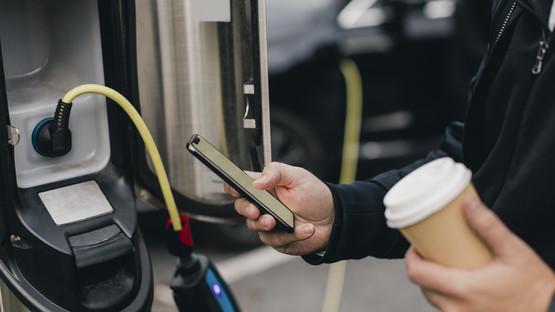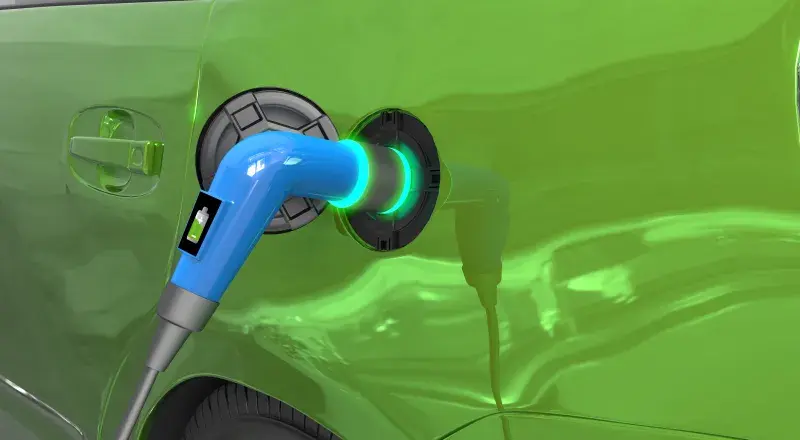Can the UK grid cope with the extra demand from electric cars?
As electric vehicles (EVs) become more widespread, one of the most common questions we’re asked is ‘How will the electricity grid handle the additional demand for electricity when more people are charging EVs?’
The transition to EVs is happening … and we’re ready
Firstly, it’s important to remember that the shift to EV adoption will happen gradually – not everyone will be getting an EV at the same time. Electric vehicle ownership will likely increase as they become more affordable and as more of them start to hit the second-hand market, demonstrated by a record number of used EV sales in the first half of 2023.
Indeed, the UK government has introduced a mandate setting out a trajectory for new EV sales; the Zero emission vehicle (ZEV) mandate includes uptake targets of 22% sales share in 2024, rising to 80% in 2030.
With this in mind, preparations to make sure the grid is ready for the increase in EV adoption – along with other aspects of the transition away from fossil fuels – have been underway for a while. We’ve been discussing how we can best work towards the green transport changeover with government, electricity distribution companies, service station operators and charge point providers for a number of years.

Where will the electricity come from for charging electric cars?
In England and Wales we’re connecting more and more renewable energy sources to the grid, to supply clean electricity for everyone. The growth in offshore wind farms, with a target of 50 gigawatts (GW) by 2030, combined with other renewables, new nuclear and interconnection with other countries will meet the future demand for electrifying transport, which we expect to be around an extra 120 terawatt hours (TWh) from our current 260TWh consumed.
Progress in the energy efficiency of many day-to-day products and appliances – such as LED light bulbs – also means that these consume less electricity than they would have done in past decades.
It’s also important to note that a significant amount of electricity is currently used to refine oil for petrol and diesel, which is then used to power ICE (internal combustion engine) cars. Fully Charged’s video Volts for Oil estimates that refining 1 gallon of petrol would use around 4.5kWh of electricity – so, as we start to use less petrol or diesel cars, some of that electricity capacity could become available.
Will the electricity grid be able to handle lots of EVs being plugged in at the same time?
There may be future scenarios where millions of EV owners plug in their EVs at the same time. So there are a number of solutions to help spread out the demand for electricity, while still making sure we can all charge our EVs when we need to:
1. Making sure the supply of electricity meets the demand from EVs
A big part of managing demand for electricity, including through increased EV uptake, is making sure power is available when we need it; for example, when we flick a light switch we expect the light to come on instantly.
This supply and demand is already managed second-by-second by Britain’s National Energy System Operator (NESO) – it’s known as ‘balancing the system’. This video explains the role of the NESO and how they work:
2. Electric vehicle smart charging: making the most of off-peak charging times
Smart charging allows EVs to charge when there’s less demand on the grid, or when more renewable (and therefore often cheaper) electricity is available. This means EVs can in fact help to balance the electricity system, helping electric car owners to use green power when it’s plentiful and avoid times when there’s more load on the network.
With this in mind, the UK Government has introduced Electric Vehicle Smart Charge Points Regulations, which ensure that EV charge points will have this smart functionality.
Using smart chargers will also help us think more about how we use energy; encouraging EV owners to charge outside of peak times will enable them to access the cheapest and cleanest energy at the most convenient place.
3. Vehicle-to-grid technology: delivering unused power back into the grid
Vehicle-to-grid (V2G) technology could even send power back to the grid when needed. This technology essentially turns your EV into an energy storage system, allowing you to sell any excess energy stored in your EV’s battery back to the grid. This not only turns off-peak priced energy into profit but helps balance supply across the grid when demand for energy is at its highest.
Do the electricity grid's wires have enough capacity for charging EVs?
The simple answer is yes. The highest peak electricity demand in the UK in recent years was 62GW in 2002. Since then, the nation’s peak demand has fallen by roughly 16% due to improvements in energy efficiency.
Even if we all switched to EVs overnight, we estimate demand would only increase by around 10%. So we’d still be using less power as a nation than we did in 2002 and this is well within the range the grid can capably handle.
Nevertheless, at National Grid we’re working with the distribution networks, government, the regulator and industry to provide the green energy infrastructure around Britain – the wires, the connections to charge points – to support the needs of a decarbonised transport network into the future.
We’re constantly evolving and upgrading the grid to make sure our electricity networks are better equipped to carry more clean energy, in order to prepare for an increase in EVs and other aspects of the clean energy transition.
Will the charging point infrastructure be sufficient for everyone to charge their EVs?
The national grid already has the advantage of being part of infrastructure corridors across the country – pylons tend to be right next to the road and train networks. So we’re already identifying the locations where the grid capacity will enable others to provide ultra-fast chargers and help to alleviate EV charging anxiety, as well as taking steps of our own.
Innovation in EV charging connections
National Grid Electricity Distribution is already collaborating on innovative projects to ready the network and install the required infrastructure in their service areas. Just some examples of this include:
- bringing the electricity network within close range of motorway service areas (MSAs) through the green recovery fund, making it quicker, easier and cheaper for them to ‘plug in’ to the network when they’re ready
- leading innovative EV charging approaches like the Electric Boulevard project in Milton Keynes, demonstrating the UK’s first ever use of inductive charging infrastructure, and Electric Nation, which broke down barriers around the understanding of vehicle-to-grid charging in homes
- the recent Take Charge project, which has already demonstrated an altogether new way to facilitate the growth that’s needed in rapid EV charging infrastructure.
Government initiatives
The UK government’s rapid charging fund (RCF) is aimed at rolling out high-powered, open-access charge points across England to prepare for more zero emissions vehicles. We’re working with the Department for Transport (DfT) and Office of Zero Emission Vehicles (OZEV) in an effort, with the help of the RCF, to enable them to get ahead of the curve and build the infrastructure the country needs.
And for charging closer to home, the Local EV Infrastructure (LEVI) Fund is supporting local authorities in England to plan and deliver charge point infrastructure for residents without off-street parking.
Published: 14 Dec 2023

Connect my EV charger
Find out more about getting your EV charger connected, including how to apply for a domestic or commercial charger connection.